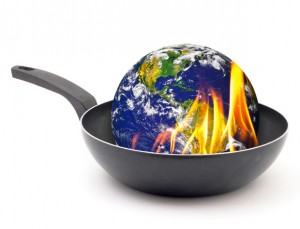IEA Advances Four Steps for the Future
Source: IEEE Spectrum, June 8, 2013
The OECD’s International Energy Agency (IEA), Paris, issued a report and companion materials today squarely addressing the question of what to do about the blunt fact that the world is not meeting its goals for reducing greenhouse gas emissions.
The agency’s new director general, Maria van der Hoeven, framed the question in notably simple and straight-forward terms: “We recently passed a grim milestone with the concentration of carbon dioxide in the atmosphere topping 400 parts per million at the Mauna Loa Observatory in Hawaii. This is uncharted territory in the history of humans. While it does not represent a tipping point per se, that milestone is symbolic of our failure to respond adequately, and to fulfill our own national and international pledges to limit average global temperature increase to 2 degrees Celsius over the long term.
“If we continue with business as usual,” van der Hoeven continued, “that rise could be 5.3 degrees Celsius, with potentially disastrous implications in terms of extreme weather events, rising sea levels, and the huge economic and social costs that these can bring. In short, we are drifting off-track, and global negotiations are not expected to yield agreement before 2015, and to be enforced after 2020.”
Taking a constructive tack, the IEA proposes four ways in which countries could substantially cut emissions between now and 2020. These, the organization reasons, would make it possible—at least in principle—to eventually limit global temperature increase to 2 degrees Celsius even in the absence of any immediate international accord. Each of the four ways was selected because the IEA predicts that it would generate significant near-term emissions cuts without dampening economic growth, rely exclusively on proven technologies, and bring significant benefits besides reductions in greenhouse gas emissions.
Of the four elements in what the IEA is dubbing its “four for two” strategy, the one that brings by far the greatest benefit (accounting for half of projected near-term emissions reductions) is improved energy efficiency. Improvements in heating and cooling, appliances, and lighting could each account for about 30 percent of efficiency gains, and electric motors another 25 percent or so; interestingly, the IEA expects only 15 percent to result from gains in automotive efficiency.
The IEA’s focus on potential efficiency gains is consistent with findings by U.S. energy authorities going back a decade or more, and gibes with the general consensus among experts. So too is its finding that phasing out the most inefficient coal-fired plants could bring substantial reductions, more than one-fifth of total near-term reductions. Cuts in fossil subsidies among the major oil producers could bring more than one-tenth. A little more startling, perhaps, is the IEA’s conclusion that eliminating methane leakage from upstream oil and gas distribution could yield a whopping 20 percent reduction in emissions.
The IEA does not dwell, in summary materials or even in the report itself, on possible obstacles to implementation of its proposals. The summary material makes no mention, for example, of what energy economists call the efficiency paradox—that as the efficiency of any given item is improved, people use more of it, vitiating any net gains. But the body of the report seems to implicitly take such issues into account, focusing on gains achievable with standards and regulation, rather than just spontaneous technology improvement and market forces.
The agency might be faulted for taking a somewhat overly optimistic view of recent emissions trends. Van der Hoeven noted, for example, that China’s 2012 increase in greenhouse gas emissions “was one of the lowest it has seen in a decade as a result of efforts in renewables deployment and efficiency gains.” That statement, taken alone, is somewhat misleading when put into context with the agency’s own summary points. For instance, China’s 2012 increase in carbon dioxide emissions (300 megatonnes) accounted for three quarters of the whole world’s net 2012 increase. It is an encouraging sign that China is considering a cap on greenhouse gas emissions in its next five-year plan, as the Financial Times reported last week, but even so, China will have a long way to go.
Still, some of the recent trends are indeed encouraging. While continued emissions reductions in Europe were largely cancelled out by post-Fukushima increases in Japan (because fossil energy replaced nuclear), U.S. emissions were down sharply and are now at levels not seen since the pre-Kyoto years of the mid-1990s. The 2012 U.S. decrease, at 200 megatonnes, was equivalent to two-thirds of China’s increase. The United States, as the IAE implies, is in fact no longer the laggard in greenhouse gas reduction that it was during the first decade following adoption of the 1997 Kyoto Protocol. The country is in a position now to take a leading role in the climate diplomacy that, the IAE fervently hopes, will chart out a long-term post-2020 global strategy.
The agreement on hydroflourocarbon reduction reached by President Obama and China’s President Xi this weekend is an encouraging sign. But it seems too much to call it a “breakthrough,” as one environmental organization did, or to speak of its boosting the odds of a “global climate deal,” as the Financial Times did today.
Learn more here:
IEA International Energy Agency climate change coal efficiency fossil fuels gas guzzlers global warming methane oil


{ 1 comment… read it below or add one }
The energy sector accounts for two-thirds of greenhouse gas emissions, the Paris-based organization said. Despite a pace of emissions that has world temperatures on track to rise more than 2 degrees Celsius from pre-industrial levels, some minor adjustments by world governments could slow emissions without any serious economic costs, the agency said.